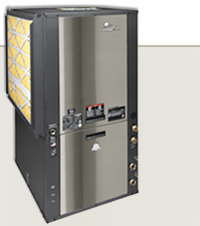FACT: Geothermal systems provide the most efficient, comfortable and environmentally friendly method of heating & cooling.
Blog
Best of Both Worlds: Pennsylvania Wildlife With Comfort of Underfloor Heating, Low Energy Bills
Outdoor enthusiasts will go to great extremes to set up camp. An example of just how far they’ll go is the “re-greening” of a rural log home near 28 mile-long Raystown Lake in central Pennsylvania.
In the fall of 2007, Travis and Rachel Wenger spent months looking for a family retreat and hunting lodge.
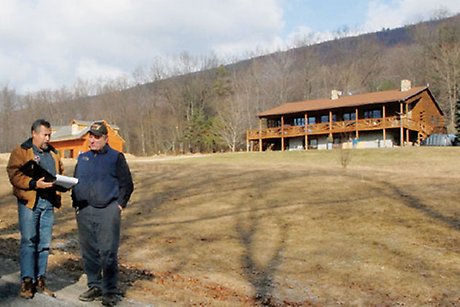
During a second visit to one of the properties – a 2,400 s.f., three bedroom log home built in 1994 – they were on the home’s wrap-around deck when suddenly the realtor clammed-up and turned pale. A 400-pound black bear, ignoring them, climbed the opposite stair to assault the gas grill.
Convinced that it was “the sign we were looking for, we immediately agreed to buy the place,” said Travis Wenger.
The home is nestled into a mountainside with property that borders thousands of acres of state game lands where deer, turkey and bear roam freely. Nearby, the great outdoors – several state parks, the Juniata River and miles of wildlife trails – beckoned.
Geothermal Renovation
Plans were to remodel the log house, adding more bedrooms and “truck loads of insulation.” Also planned were extensive HVAC upgrades with geothermal-to-radiant heating and a large log garage with living quarters above for guests, all radiantly heated.
The HVAC installer then ran its course with the integration of solar panels and geothermal in the fall.
“The Wengers saw an 80-percent drop in energy expenses last winter,” concluded Yates. “The carbon footprint got a lot smaller, and they’ve added tremendously to the size of their comfort zone.”
During a period of several months, the energy-in-the-red log house metamorphosed into an unusually energy efficient base camp for outdoor enthusiasts – complete with all the comforts of home.
“Before the remodel, the place left a Sasquatch-sized carbon footprint,” said Dave Yates, the installer. “The log home leaked like a sieve. Winters are brutal up there, so they were burning liquid propane gas furiously and watched the electric meter spin like an old 78 Victrola.”
Yates visited the Wengers in the fall of 2007 to do the heat load calculation and to make notes about the upcoming job. “For the homeowners, achieving energy efficiency was just as important as having year-round comfort,” added Yates.
“Previously, the home had electric air conditioner and a 140 MBH LP-gas furnace with supplemental heat from one fireplace and three old potbelly wood stoves,” said Yates. “They also used several electric heaters and an old electric water heater.”
The Wengers gave Yates flexibility in designing a “green” system, adding that if it made sense to keep some of the old equipment, fine. But where it made better sense to toss out the old to make room for the new was even better.
Before long, materials and equipment were being trucked up the narrow mountain road to the job site.
A local water well and geothermal driller brought in his equipment with instructions to drill three bore holes into which geothermal lines were inserted. The holes were then thermally grouted.
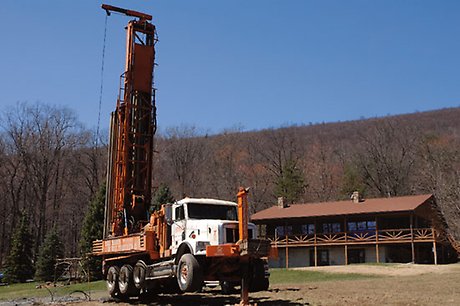
The Wengers settled on a unique heating and cooling system designed by Yates, at the heart of which – for the heating season – would be a high-temp water-to-water geothermal system by ClimateMaster, two twin-coil indirect water heaters, and several preassembled, hydronic panels – one of which was built to introduce solar heat for domestic water, then to share additional heat with the radiant system.
By the time the geothermal installing crew began their work at the home, 100 miles from the shop, the Wengers had already re-sealed all the log, began the basement remodel and set the foundation for the log garage, including a 150-foot trench between the house and garage for a thermally-protected injection loop run between the two buildings. The planned geo-to-radiant heat pump system in the house would heat the garage, too.
The old 10 SEER central a/c system was disconnected and, tapping the existing trunk-line, the job site supervisor and mechanic installed a 4-ton ClimateMaster Tranquility water-to-air geothermal heat pump system, a 27 SEER unit that could also provide back-up heat.
Underfloor Heating, at a Glance
The first radiant floor heating installation wasn’t hydronic. Most of the home’s lower level concrete slab was rigorously cleaned. Crack isolation membrane was attached to hairline fissures, and then electric radiant mats were installed prior to thin-setting of ceramic tile and stone flooring.
“We knew we’d need floor warming down there for the winter months – the big room is where we’ve placed a bar and pool table,” said Rachel Wenger. “We didn’t want to risk it being uncomfortable.”
While the basement work was under way and the joist bays were open, the Wengers and Yates’ crew stapled up 2,400 lineal feet of synthetic rubber hydronic heating tubing to the subfloor to heat the home’s entire main floor. The many loops were brought back to stainless steel manifolds.
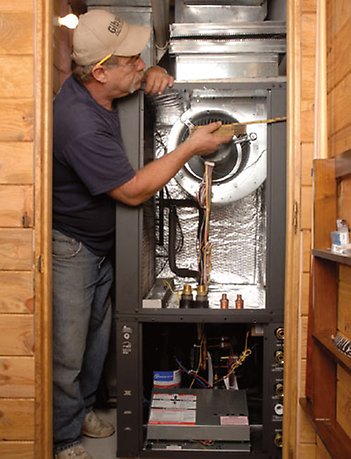
As this was happening, the installer mounted the hydronic panels which would control hydronic heat. The panel heat source wasn’t the ClimateMaster heat pump water-to-water unit, but one of the 120-gallon, twin-coil indirects.
“We used both of the large, internal stainless steel coils to circulate water from the water-to-water unit,” said Yates. The tank’s 120 gallons of water became the ‘thermal target’ and the source of all good things, hydronically speaking.”
Geothermal Boiler
ClimateMaster’s three-ton water-to-water unit (what Yates refers to as the “geothermal boiler”) is rated at a maximum output of 145°F with a peak COP of 4.5, and that’s with sufficient geo-exchange.
Yates choose the right geo equipment and specified a need for three 260-foot bore holes. But the Wengers asked the geothermal driller to take the holes down further, lengthening each one by another 40 feet.
“We believe this was the reason for one of the big surprises at system startup in December of ‘08,” said Yates. Though temps hovered between 10 and 11 degrees outside, the ClimateMaster unit was delivering system heat of 157°F, substantially higher than the system was rated for.
To provide heat for the garage, they unfurled a large coil of heavily-insulated, underground tubing. It was placed inside a four-foot-deep trench between the house and garage.
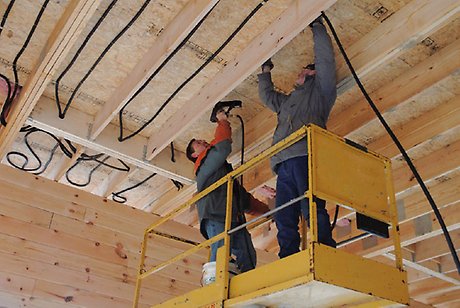
Today, the subterranean tubing thermally connects the buffer tank’s 120-gallon volume with the garage’s slightly smaller two-temperature radiant heat system.
In the heating mode, high temp water (145 to 155°F) is transported to the garage where it enters another hydronic systems panel. Source water goes directly into a manifold with four loops that disappear into the ceiling.
Unseen, they’re stapled to the under-floor of the building’s 600 s.f. upper area that includes a bunkhouse bedroom with four beds, a living room, bathroom, kitchenette and hallway, all radiantly heated.
“You could heat the place with a candle,” said Yates. The Wengers achieved an incredible R-90 rating in the ceiling and upper knee-walls.
In the garage’s lower level, only a 10-by-30-foot tool room was radiantly heated. Slab heat was accomplished by pre-insulating that portion of the slab; tubing was then attached to rewire and pressure-tested until the concrete over-pour was hard.
The Results: Energy Bill Savings and Comfort
“Last winter was amazing,” said Rachel Wenger. “Even though all the systems weren’t operational, we had plenty of heat for the house and garage. This winter, with all systems working, we’ll have many more people there to enjoy the warmth inside.”
The ClimateMaster geothermal heating system sends 145-degree water into a 120-gallon water heater. This stored volume of heated water serves as the heat source for the radiant heat zones.
“The Wengers saw an 80-percent drop in energy expenses last winter,” concluded Yates. “The carbon footprint got a lot smaller, and they’ve added tremendously to the size of their comfort zone.”
How much can a geothermal system save you on your heating and cooling bills? Call one of our friendly installers, or fill out the form up on the right!



